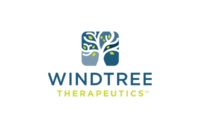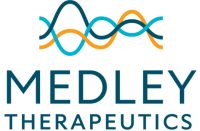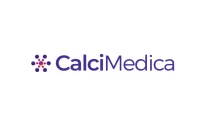- Cardiovascular diseases are responsible for 17.9 million deaths every year¹, a third of all deaths globally²
- Roche announces five new intended uses for key cardiac biomarkers to help identify cardiovascular risk, better diagnose patients and support early treatment
- Early diagnosis and treatment can contribute to saving or improving people’s lives and could help healthcare systems save money
Basel, 28 April 2021 – Roche (SIX: RO, ROG; OTCQX: RHHBY) announced a series of five new intended uses for two key cardiac biomarkers using the Elecsys® technology: high sensitive cardiac troponin T (cTnT-hs) and N-terminal pro-brain natriuretic peptide test (NT-proBNP). These gold standard biomarkers³ have proven to be successful in supporting cardiovascular disease management and can help clinicians diagnose heart attacks⁴ (cTnT-hs) and better manage heart failure⁵ (NT-proBNP). Roche’s introduction of five new intended uses for these existing, globally accepted diagnostic solutions means more people could benefit from improved cardiovascular diagnostics. By providing greater precision and certainty for clinicians, Roche can help them tackle the world’s biggest killer: cardiovascular diseases.
“The five new solutions we launch this month add real value for clinicians by supporting cardiac risk identification and improving diagnosis. In turn, this will help them make early treatment decisions, improve people’s lives and reduce healthcare costs,” said Thomas Schinecker, CEO Roche Diagnostics. “As the market leader in cardiovascular testing Roche is committed to innovation in cardiovascular care and these new intended uses are the first of many solutions planned over the next decade that could help improve the lives of millions of people.”
One of the new intended uses for Elecsys® NT-proBNP supports healthcare professionals in identifying which people with type-2 diabetes (463 million worldwide⁶) are at higher risk of developing cardiovascular disease⁷. Early identification of people at risk means cardioprotective treatment can be started sooner, which could prevent 65% of hospitalisations or deaths⁸. The second newly-launched intended use for NT-proBNP provides healthcare professionals with a biomarker-based solution that identifies people at risk of developing Atrial Fibrillation (AF), an abnormal heart rhythm that can lead to stroke, brain damage and death⁹. More than 37 million people suffer from AF globally¹⁰. NT-proBNP, in combination with a single lead (or higher) electrocardiogram, can help to successfully diagnose AF so therapy can be started to reduce the stroke risk¹¹.
Another important biomarker, Elecsys® cTnT-hs, now provides healthcare professionals with data to help predict heart attack risk and mortality in non-cardiac surgery patients. Every year, over 200 million adults undergo major non-cardiac surgery with 10 million suffering from major adverse cardiac events (MACE) that could be prevented through early and accurate diagnosis¹².
Both Elecsys® NT-proBNP and Elecsys® cTnT-hs can be run on all cobas e® analysers. They are among the first products certified under the new European In Vitro Diagnostics Regulation (IVDR) and available as of today in countries accepting CE mark. Availability in other countries is subject to local registration processes and timelines.
About Elecsys® NT-proBNP
Tests for NT-proBNP, a cardiac hormone that is released into the blood when the heart wall is stretched, are developed and marketed by Roche. NT-proBNP is an objective marker for the aid in diagnosis in individuals suspected of having congestive heart failure and detection of mild forms of cardiac dysfunction. This assay is further indicated for the risk stratification of patients with acute coronary syndrome and congestive heart failure, and it can also be used for monitoring the treatment in patients with left ventricular dysfunction.
Added intended uses for Elecsys® NT-proBNP
(1) Type-2 diabetes and heart failure
463 million people suffer from type-2 diabetes worldwide⁴ and are at higher risk of developing cardiovascular disease. The new intended use of Elecsys® NT-proBNP provides healthcare professionals with a precise biomarker that supports them to identify patients with high cardiovascular risk. This means that effective drug treatment can be started early so that cardioprotective treatment can be optimized. In PONTIAC-I it was shown that 65% of hospitalisations or death could be prevented⁸.
(2) Atrial fibrillation
More than 37 million people suffer from Atrial Fibrillation (AF) and 25% of people over 40 years old develop AF in their lifetime. More than 450 million people aged 70 or above are considered high risk for this disease. Patients with AF are exposed to a fivefold risk of stroke¹³ and therefore brain damage or death¹⁴. One of the key elements in reducing stroke is early detection of people at risk of Atrial Fibrillation by better identification methods. Our second launched intended use for Elecsys® NT-proBNP provides healthcare professionals with a biomarker based solution that identifies people at risk and, in combination with a single lead (or higher) ECG, can aid successful diagnosis so therapy can be started.
About Elecsys® cTnT-hs
The Elecsys cardiac Troponin T high-sensitivity (cTnT-hs) test from Roche, detects cardiac troponin which is the guideline recommended biomarker for the diagnosis of heart attack in clinical practice. In combination with an electrocardiogram (ECG), high-sensitive Troponin has become the gold standard for the diagnosis of heart attack. Using the accelerated ESC 0/1 hour algorithm with the Elecsys cTnT-hs assay, significantly accelerates “rule-in” and “rule-out” decision-making, thereby maximising the potential for effective treatment. At the same time, the faster decision-making may help to better manage the emergency room workload and related costs for healthcare systems¹⁵.
Added intended uses for Elecsys® cTnT-hs in coronary artery disease
(3) Over 200 million adults globally undergo major non-cardiac surgery every year. Of these, over 10 million suffer from major adverse cardiac events (MACE) in the first 30 days after non-cardiac surgery and more than 80% of those are clinically asymptomatic. The new intended use for Elecsys® cTnT-hs provides healthcare professionals with a biomarker that helps to predict the perioperative risk of a heart attack and to a perioperative heart attack in non-cardiac surgeries to allow clinicians to tailor surgery and post-operative care accordingly.
(4) The second newly-launched intended use for Elecsys® cTnT-hs makes the biomarker serve as an aid in assessing the long-term risk of cardiovascular events (death, myocardial infarction, coronary revascularisation, heart failure or ischemic stroke) in asymptomatic individuals.
(5) Elecsys® cTnT-hs is the gold standard for triaging patients suspected of Acute Coronary Syndrome in Emergency Departments and Intensive Care Units The third launched intended use for this biomarker can help to improve early discharge and outpatient management of these patients.
About Roche
Roche is a global pioneer in pharmaceuticals and diagnostics focused on advancing science to improve people’s lives. The combined strengths of pharmaceuticals and diagnostics under one roof have made Roche the leader in personalised healthcare – a strategy that aims to fit the right treatment to each patient in the best way possible.
Roche is the world’s largest biotech company, with truly differentiated medicines in oncology, immunology, infectious diseases, ophthalmology and diseases of the central nervous system. Roche is also the world leader in in vitro diagnostics and tissue-based cancer diagnostics, and a frontrunner in diabetes management.
Founded in 1896, Roche continues to search for better ways to prevent, diagnose and treat diseases and make a sustainable contribution to society. The company also aims to improve patient access to medical innovations by working with all relevant stakeholders. More than thirty medicines developed by Roche are included in the World Health Organization Model Lists of Essential Medicines, among them life-saving antibiotics, antimalarials and cancer medicines. Moreover, for the twelfth consecutive year, Roche has been recognised as one of the most sustainable companies in the Pharmaceuticals Industry by the Dow Jones Sustainability Indices (DJSI).
The Roche Group, headquartered in Basel, Switzerland, is active in over 100 countries and in 2020 employed more than 100,000 people worldwide. In 2020, Roche invested CHF 12.2 billion in R&D and posted sales of CHF 58.3 billion. Genentech, in the United States, is a wholly owned member of the Roche Group. Roche is the majority shareholder in Chugai Pharmaceutical, Japan. For more information, please visit www.roche.com.
All trademarks used or mentioned in this release are protected by law.
References
[1] 17.9 M deaths: https://www.who.int/health-topics/cardiovascular-diseases/#tab=tab_1
[2] A third of all deaths: Mensah, G. A., et al. (2019). “The Global Burden of Cardiovascular Diseases and Risk Factors.” 2020 and Beyond 74(20): 2529-2532
[3] Gold standard biomarkers: Ohman EM. Clin Chem 2017; 63: 429
Gold standard biomarkers: McKie, PM., et al. (2016). J Am Coll Cardiol 68(22), 2437-2439
[4] Help clinicians diagnose heart attacks (cTnT-hs): Roff M et al, Eur Heart J 2016; 37: 267
Help clinicians diagnose heart attacks (cTnT-hs): Amsterdam EA et al., Circulation 2014;130:2354
[5] Better manage heart failure (NT-proBNP): Ponikowski P et al., Eur Heart J 2016; 37:2129
Better manage heart failure (NT-proBNP): Yancy CW et al, Circulation. 2017;136:e137;
[6] 463 million diabetics worldwide: Saeedi P et al., Diabetes Res Clin Pract 2019
[7] “NT-proBNP supports healthcare professionals in identifying which type-2 diabetes patients are at a higher risk of developing cardiovascular disease”: Huelsmann M. et al. JACC. 2013, 62:1365-72
[8] PONTIAC reference: 65% of hospitalisations or death: Huelsmann, M. et al., J Am Coll Cardiol., 2013; Vol. 62, pp. 1365-1372 [same as ref 9]
[9] Atrial Fibrillation (AF), the most common of abnormal heart rhythms which can lead to stroke, brain damage and death (ref: Hindricks, G. Eur Heart J (2020) Aug 29;ehaa612
Atrial Fibrillation (AF), the most common of abnormal heart rhythms which can lead to stroke, brain damage and death (ref: January C.T., et al. Circulation (2014); 130:e199–e267)
Atrial Fibrillation (AF), the most common of abnormal heart rhythms which can lead to stroke, brain damage and death(ref: January, C.T. Circulation (2019); 140(2):e125-e151)
[10] More than 37 million people suffer from AF globally (ref: Lippi G. et al (2020), International Journal of Stroke. 16 (2): 217-221)
[11 NT-proBNP, in combination with a single lead (or higher) electrocardiogram, can help to successfully diagnose AF so therapy can be started.(ref: Gudmundsdottir, K. et al. (2020). Eurospace 22, 24-32)
[12] Every year, over 200 million adults undergo major non-cardiac surgery⁶ with 10 million suffering from major adverse cardiac events (MACE) that could be prevented through early and accurate diagnosis. (ref: Devereaux PJ, Sessler DI. (2015). Cardiac complications in patients undergoing major noncardiac surgery. N Engl J Med 373, 2258-2269)
[13] Patients with AF are exposed to a fivefold risk of stroke → Patients with AF have a 5-fold increased risk of stroke. (ref: Wolf et al, Stroke Vol 22, No 8 August 1991)
[14] and therefore brain damage or death → and greater frequency of brain damage, disability or death. (ref: Alkhouli, M. JACC Clin Electrophysiol (2018); 4(5):618-625.
and therefore brain damage or death → and greater frequency of brain damage, disability or death. (ref:Marini, C. Stroke (2005); 36(6):1115-1119.
and therefore brain damage or death → and greater frequency of brain damage, disability or death. (ref:Hannon, N. Cerebrovasc Dis (2010); 29(1):43-49.
[15] Using the accelerated ESC 0/1 hour algorithm with the Elecsys cTnT-hs assay, significantly accelerates “rule-in” and “rule-out” decision-making, thereby maximising the potential for effective treatment. At the same time, the faster decision-making may help to better manage the emergency room workload and related costs for healthcare systems. (ref: Kiril M Stoyanov et al. (2020) Acute Cardiovascular Care, 9(1): 39–51,
Roche Group Media Relations
Phone: +41 61 688 8888 / e-mail: media.relations@roche.com
| Dr. Nicolas Dunant Phone: +41 61 687 05 17 |
Patrick Barth Phone: +41 61 688 44 86 |
| Dr. Daniel Grotzky Phone: +41 61 688 31 10 |
Karsten Kleine Phone: +41 61 682 28 31 |
| Nina Mählitz Phone: +41 79 327 54 74 |
Nathalie Meetz Phone: +41 61 687 43 05 |
| Dr. Barbara von Schnurbein Phone: +41 61 687 89 67 |
| Roche Investor Relations | |
| Dr. Karl Mahler Phone: +41 61 68-78503 e-mail: karl.mahler@roche.com |
Jon Kaspar Bayard Phone: +41 61 68-83894 e-mail: jon_kaspar.bayard@roche.com |
| Dr. Sabine Borngräber Phone: +41 61 68-88027 e-mail: sabine.borngraeber@roche.com |
Dr. Bruno Eschli Phone: +41 61 68-75284 e-mail: bruno.eschli@roche.com |
| Dr. Birgit Masjost Phone: +41 61 68-84814 e-mail: birgit.masjost@roche.com |
Dr. Gerard Tobin Phone: +41 61 68-72942 e-mail: gerard.tobin@roche.com |
| Investor Relations North America | |
| Loren Kalm Phone: +1 650 225 3217 e-mail: kalm.loren@gene.com |
Dr. Lisa Tuomi Phone: +1 650 467 8737 e-mail: tuomi.lisa@gene.com |





